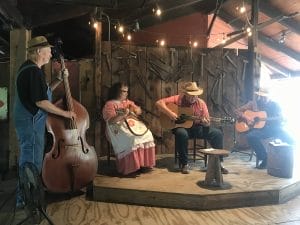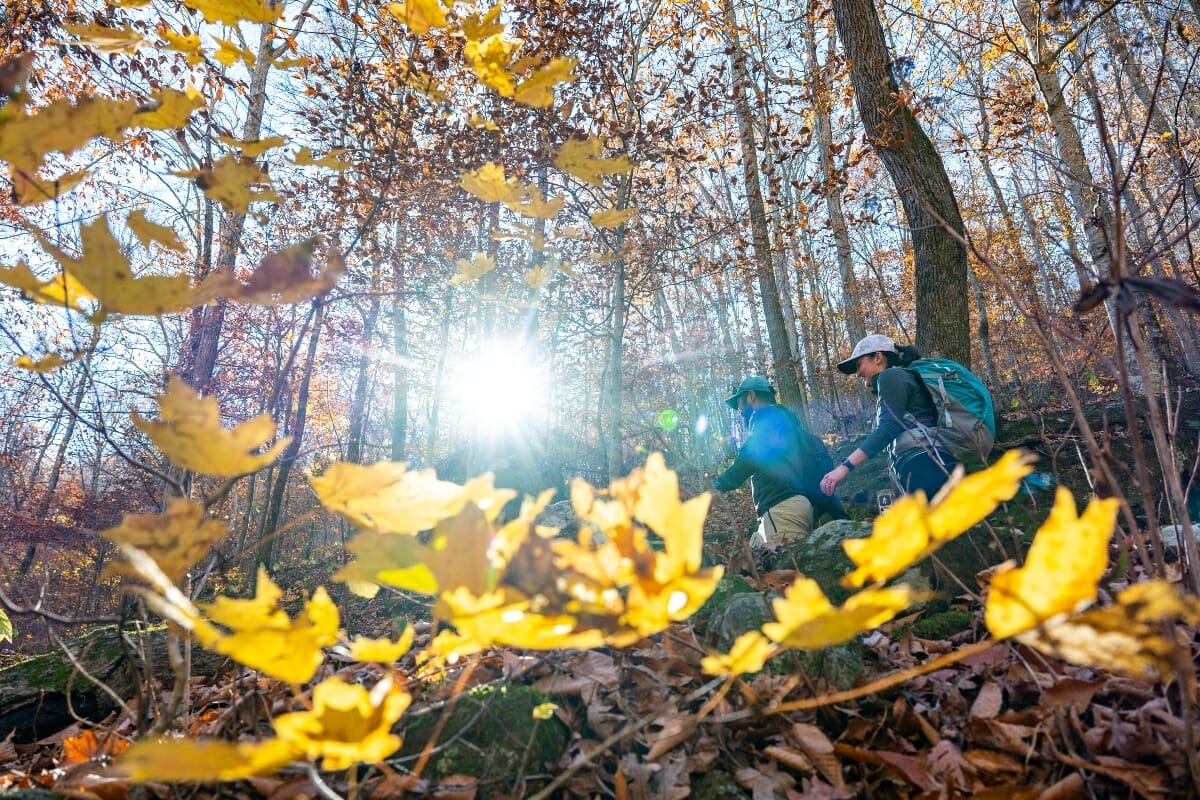

Uh oh...
It appears that you're using a severely outdated version of Safari on Windows. Many features won't work correctly, and functionality can't be guaranteed. Please try viewing this website in Edge, Mozilla, Chrome, or another modern browser. Sorry for any inconvenience this may have caused!
Read More about this safari issue.

I wouldn’t consider myself a “birder” per se. I don’t own a book on bird species, know their migratory seasons or even watch my bird feeders frequently. However, the feeling of awe creeps over me when our Momma Robin makes her nest outside our back door each year. I feel she chose me to keep an eye out for snakes trying to scale the posts for her beautiful blue eggs. My urge to care is instinctual, so when I found a naked, squirming hatchling on the sidewalk outside my office last year, I panicked. I called several bird rehabilitators in Central Arkansas to learn what to do. Here are the steps to take if you need to rescue a baby bird.

Assess the situation.
Don’t act too quickly. Watch for a few minutes.
Is the baby bird hurt? How old is it? Can you see its nest or know which tree the nest is in? Are the parents nearby?
Baby birds less than three days old are considered hatchlings. They don’t have any feathers. Their beaks are extremely large for their heads and their bodies are incredibly fragile. A hatchling is entirely dependent on its parents for survival and warmth.
A nestling is between a few days and two weeks old. They are slightly more independent than hatchlings, though not by much. A nestling has open eyes and feathers, but they aren’t fluffed yet to keep warm or be waterproof.
A baby bird becomes a fledgling when it is almost too big to share the nest with its siblings. Fledglings have nearly all their adult feathers. While they may not be ready to fly, they have a pretty convincing hop and flutter. Fledglings will practice coming and going to the nest until they get the hang of this whole flying (and adulting) thing.

Fledglings
If you determine the baby bird before you is a fledgling, it’s best to leave it alone. It could be that the baby is simply out of its nest practicing a little independence while mom and dad are watching from a respectable distance. This is worth repeating, mainly to myself, leave a fledgling alone and let that momma become an empty-nester. This is a natural part of growing up and leaving home.

Hatchlings and Nestlings
But if your baby bird is a hatchling or a nestling… the clock is ticking.
Bird rehabilitators all agree that putting the baby back in its nest is the best guarantee for survival. In most cases, mom and dad are close, and they probably see you in the vicinity of the nest with their baby. They can’t pick their baby up and put it back in their nest themselves. If you leave it on the ground, mom and dad can feed it, but they can’t protect it from predators or keep it warm. It is recommended to return the baby to its nest.
If you can’t reach the nest, grab a container the size of a Cool Whip bowl and poke drain holes in the bottom. Add nesting materials like dry grass and leaves. Then nail the container to the tree as close to the nest as you can reach. It’s important your makeshift nest be at least six feet off the ground. The hope is that the parents will hear the baby’s chirps and take over from there.

While you are preparing the makeshift nest or finding a bird rehabilitator:
DO: Keep the baby bird warm. You can use a heating pad wrapped in a towel placed next to the baby bird. A box and a towel are not enough to keep the baby warm.
DO NOT: Place the baby bird directly on the heating pad even if wrapped in a towel. The baby could get too warm and develop injuries from the heat.
DO: Attempt to feed the bird, if you know what kind of bird it is. Most baby birds can handle a moist little piece of bread, small enough that they will not choke. Moist dog food also works. Keep in mind that the food cannot be dripping wet as the baby bird could choke or drown. Also note, bread and dog food are not a sustainable diet for a baby bird. This is just for a couple of feedings until you can return the baby to its parents or a bird rehabilitator.
DO NOT: Try to give the baby bird any water. Birds do not suckle, lick or ingest water in the same way as other animals. You run a great risk of choking or drowning the baby.
DO NOT: Keep any wild animal as a pet or attempt to rehabilitate one yourself as there are guidelines and penalties for doing so. It is worth checking out the laws, requirements and exemptions for rehabilitating/adopting/releasing a wild animal on Arkansas Game and Fish Commission’s website.

If you feel you need a bird rehabilitator:
You must find one within two hours. Hatchlings and nestlings need nutrients every fifteen minutes and rely on their mother for warmth. If the baby gets too cold and doesn’t eat quickly enough, their chances of survival grow very slim. Fledglings feed about every thirty minutes. If they are injured or having trouble stabilizing themselves, a rehabilitator should be called.
Find a Bird Rehabilitator in Arkansas
Arkansas Game and Fish Commission keeps a list of permitted bird and wildlife rehabilitators.
I found, through my experience with this hatchling, that bird rehabilitators will try to give you the best possible contact nearest to your location. Some only help songbirds. Others only help predatory, or raptor birds, like this rehab in central Arkansas. If you don’t know what kind of baby bird you have, they are all willing to help and respond as quickly as they can. They understand that displaced baby birds need to be rescued within two hours.
Tip: Songbird babies are very small, while raptor babies are much larger in comparison.
Become a Bird Rehabilitator in Arkansas
The Arkansas Game and Fish Commission offers a Wildlife Rehabilitation Permit that requires a two-year apprenticeship under a permitted mentor.
For more information on Arkansas Birds, click here.
Join the Conversation
Leave a Comment
One response to “How to Rescue a Baby Bird If You Find One”
 Leave a Reply
Leave a Reply
We do the work.
You check your email.
Sign up for our weekly e-news.
Get stories sent straight to your inbox!











 Leave a Reply
Leave a Reply
Great advice Amber!